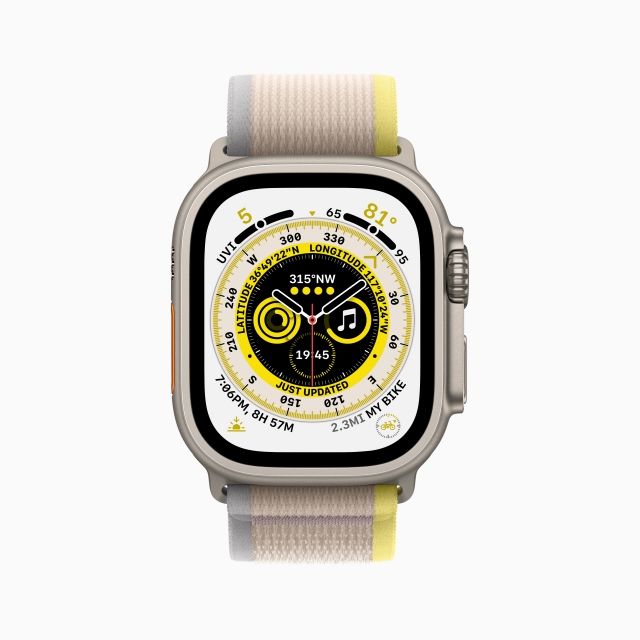Market Now
[KH Explains] How soon will microLED replace OLED?
 |
Apple Watch 8 Ultra (Apple) |
Micro light-emitting diode, or microLED, has become a buzzword in tech, as Apple -- the world’s largest consumer electronics company by revenue -- is reportedly working to use the sophisticated display technology in upcoming Apple Watches while reducing the use of organic light-emitting diode displays, whose key suppliers are South Korea’s Samsung and LG.
In recent years, OLED has been increasingly used in high-end TVs, smartphones and wearable devices to offer better picture quality. However, microLED is considered a step up, as it boasts better durability, a longer life span and greater energy efficiency.
"One of the key reasons Apple is planning to switch to microLED screens would be their higher energy efficiency over OLED," Yi Choong-hoon, CEO and top analyst of Seoul-based display market tracker UBI Research, told The Korea Herald.
"This would allow smartphone and wearable devices to have a longer battery life,” the analyst added.
MicroLED is a flat-panel display technology that uses microscopic light-emitting diodes to form individual pixels. Like OLED, microLED is an emissive display in which each pixel in the screen emits its own light and no backlight is required.
Emissive displays are known to create perfect black levels, vivid color and near-perfect off-angle viewing. When compared to OLED, microLED technology enables brighter displays with better contrast, and is also more durable and immune to burn-in, because it is made of inorganic materials.
Despite many benefits, however, the tricky and pricey production in its nascent stage has been an issue -- directly linked to the product price.
“In the long run, microLED may become cheaper when the technology is mature enough. But in this beginning stage, the final product is expected to be pricier than the ones with OLED screens,” said an industry official on condition of anonymity.
Another industry official was also skeptical of Apple’s wider adoption of microLED.
“Apple rarely adopts new technology earlier than rivals, possibly to reduce the earlier risks. It was a latecomer when it comes to OLED,” said the official, who also wished to be unnamed. “For the trickier microLED, it would take a more careful approach to gauge the marketability.”
Apple’s possible adoption of microLED appears to be prompting rivals and suppliers to bolster preparedness.
Apple’s archrival Samsung Electronics, the world’s largest smartphone maker in terms of shipments, has also started working on the adoption of the technology for smaller devices, since introducing its first microLED TV launched in 2020.
Sources say, however, Samsung is not considering using the technology for its smartphones and wearables for now, considering the still immature technology.
Its display-making unit Samsung Display launched a new microLED research team early this year, but the key purpose is mass-producing panels for extended reality headsets by 2024.
Amid mixed outlook for Apple’s push for microLED, industry watchers predict it seems unavoidable for it to team up with outside partners to produce the panels because it has no manufacturing facilities.
According to Yi of UBI Research, Apple could work with a Malaysian company it has invested in, along with its current Korean suppliers.
“The Malaysian company could produce LED chips for Apple, while entrusting the module production to a Korean display maker,” Yi said, declining to name the Malaysian company. He added there is a possibility that related talks could have been exaggerated as Apple producing microLED on its own.
Both Samsung Display and LG Display declined to comment on their possible partnership with Apple on microLED production, as well as the client’s possible discontinuation in using their OLED panels.
By Jo He-rim (herim@heraldcorp.com)








